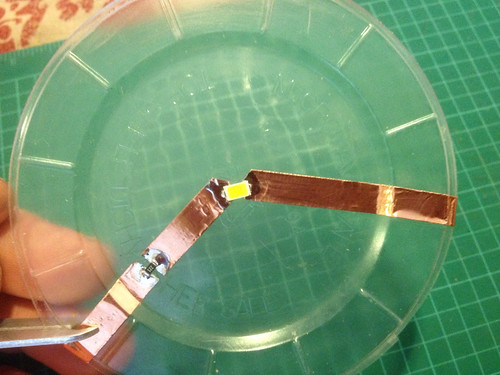Soldering onto Plastic
Backstory: I was thermoforming some more bits for my bottle light project and picked a clear plastic food container out of the recyling bin. I popped it into my jig and in the toaster oven at 250F for 5 minutes - which is normally enough to hit the glass transition point where it takes the new form. This one didn’t. I jacked up the heat a bit, and again. Even at over 300F it really wanted to spring back to its original form. It struck me that this was a solution for a different problem I’ve been mulling over. I want to create the little joule thief circuit I’m using for the bottle lights directly onto the cylinder structure. Or as near as possible. When I apply foil traces to the plastic and solder components to them, the heat badly melts and distorts that substrate. I had some limited success applying foil traces to heavy duty greenhouse tape and soldering components to that. But getting the tape off my work surface and transferring to the plastic structure bends it too much and the tape lifts in places and the solder joints are put under a lot of stress.
The new plastic is a polypropylene, and the container was marked as microwave and top-shelf dishwasher safe. As a quick experiment I put down copper traces to hook up a SMD resistor and LED. It worked great. I flux where the solder needs to flow on the tape, add a dab of solder, place the component and re-melt the solder to flow onto the contacts. I’m using a normal iron with chisel bit that I would use for through-hole soldering and there was no distortion. The quick video shows the result.
As I’m wanting to make each component - the battery holder and switch, the LED driver (joule thief), the LED string - modular, this should work out nicely. I can pre-shape a piece of the heat-safe plastic (at a higher temperature), apply copper foil traces and solder up the circuit (I think manually, I don’t expect reflow techniques to be practical here) and join it to the main cylinder structure with double-sided tape or a rivet/eyelet or some other adhesive.
